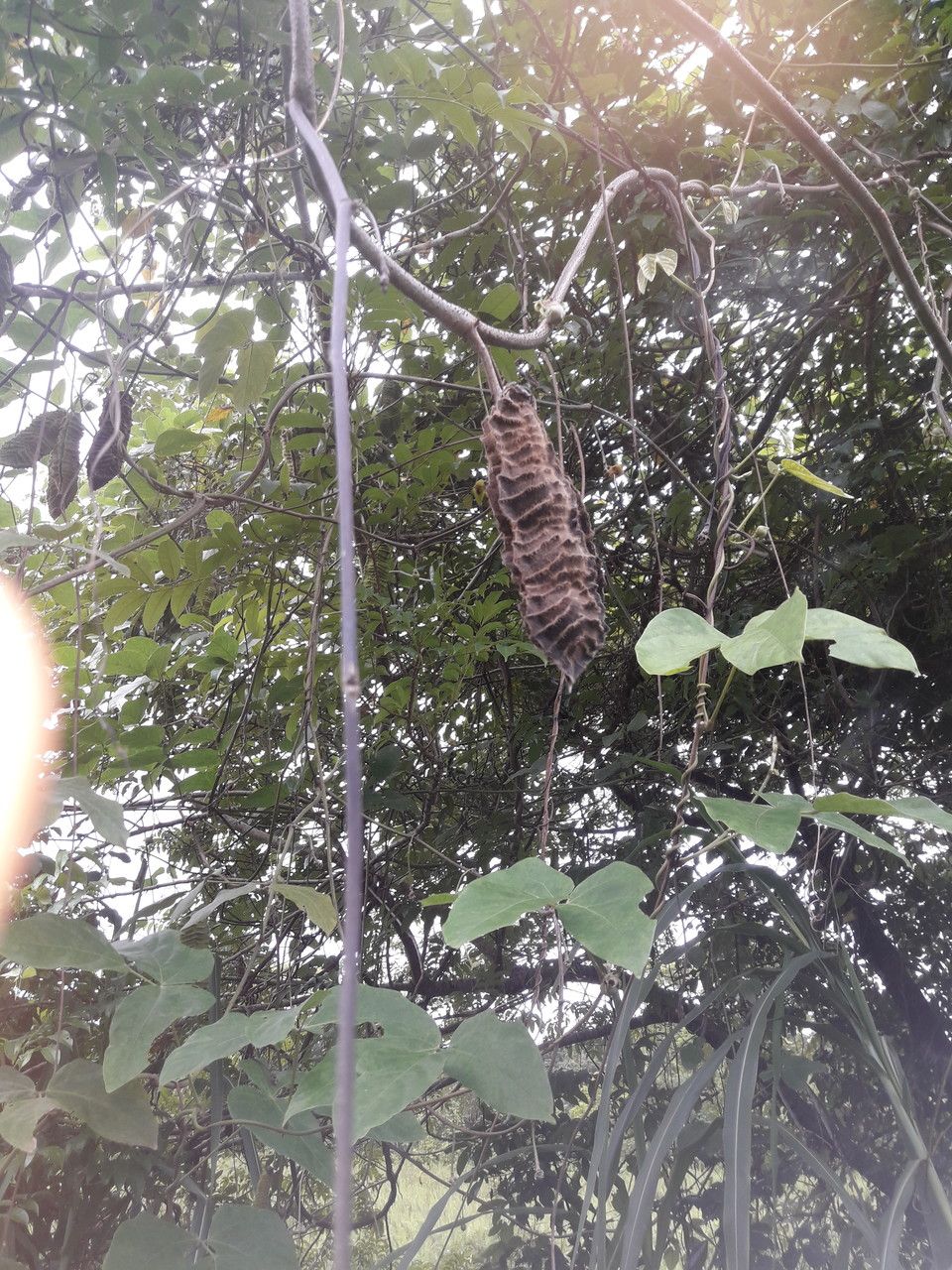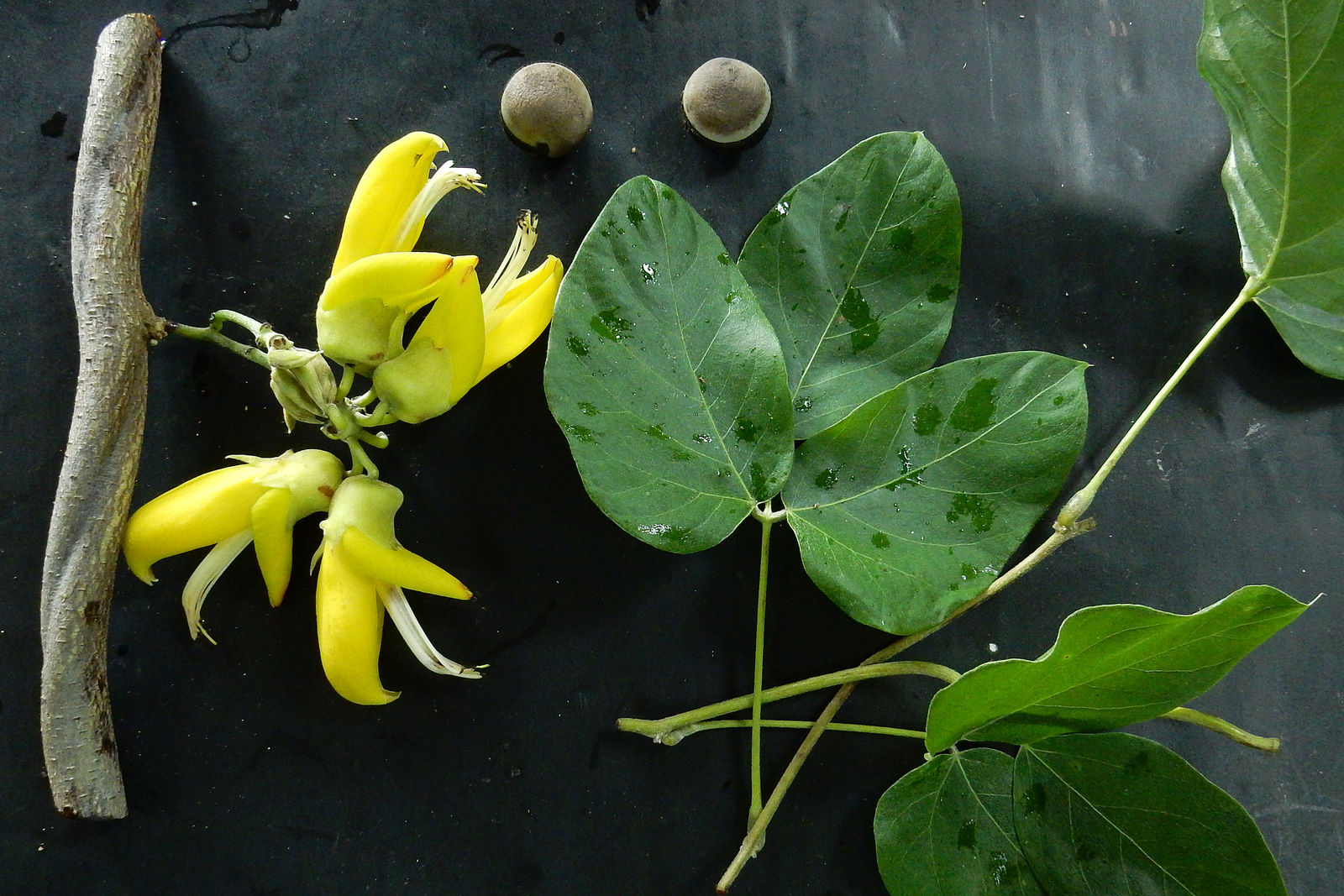Sea Bean
mucuna sloanei
Also known as: ["Sea Bean","Velvet Bean"]
Overview
A tropical legume known for its large, velvety pods and toxic seeds, often found washed ashore in tropical regions.
Benefits & Perks
["wildlife attractant (bees, butterflies, birds)","drought tolerant","rare/collector’s item"]
Botanical Classification
| Phylum: | Magnoliophyta |
| Class: | Magnoliopsida |
| Order: | Fabales |
| Family: | Fabaceae |
| Genus: | Mucuna |
| Botanical Name: | Mucuna sloanei |
Plant Characteristics
Basic Information
- Category: Shrubs
- Suitable Location: tropical greenhouse or sheltered outdoor space with support for climbing
- Suitable For:
- Is Weed: No
- Allergenicity: moderate
Environmental Needs
- Climate: {"temperatureRange":"18–30°C"}
- Hardiness: {"zones":"10–11"}
- Misting: every 2–3 days to maintain high humidity
- Drainage: Fast-draining to prevent waterlogging.
- Soil Type: Rich, well-draining potting mix with added perlite or sand for aeration.
Maintenance Level
- Maintenance Level: moderate
- Toughness Level: moderate
- Pruning Frequency: Annually or as needed to maintain shape and health.
- Pruning Intensity: Moderate; remove up to one-third of the plant if overgrown.
Care Details
Ideal Sunlight Coverage:
Bright indirect light for 6–8 hours daily; can tolerate some direct morning sun but avoid harsh afternoon rays.
Sunlight Tolerance Tips:
Acclimate the plant gradually to direct light to prevent scorching. For indoor placement, position near an east or west-facing window with sheer curtains.
Care Requirements
Care Difficulty
moderatemoderate
Sunlight
partial shade to dappled sunlight
Rotate plant weekly for even growth; use sheer curtains to filter intense light; avoid direct afternoon sun.
Watering
every 7–10 days during active growth, reducing in winter
Water thoroughly until it drains from the bottom, avoid letting the plant sit in water, and ensure the soil dries slightly between waterings.
Soil
rich, well-draining, organic soil with good moisture retention
pH: Slightly acidic to neutral (pH 6.0–7.0).
Ensure pots have drainage holes; avoid heavy clay soils; top-dress with compost annually.
Temperature
Prefers 65–85°F (18–29°C); thrives in warm, stable conditions with slight cooling in winter.
Avoid sudden temperature changes; maintain stable warmth; protect from drafts.
Fertilizing
every 4–6 weeks during growing season with balanced liquid fertilizer
Always water before fertilizing to prevent root burn; flush soil occasionally to prevent salt buildup.
Propagation
Methods
Stem cuttings in soil or water.
Step-by-Step Propagation Guide
- Select a healthy stem, cut below a node, remove lower leaves, apply hormone (optional), plant in medium, maintain moisture.
Best Time: Spring or early summer when the plant is actively growing.
Environment
Warm, humid environment with indirect light.
Medium
Well-draining potting mix or water with occasional root hormone application.
Hormone
Optional but recommended for faster rooting.
Timeline
Roots typically form in 2–4 weeks; new growth may take 1–2 months.
Tools Needed
Pruning shears, rooting hormone, small pots, well-draining soil.
Quick Tips
Use a stem with at least two nodes; maintain high humidity for faster rooting.
Pruning & Repotting
Pruning Guide
Method
Selective pruning of stems to shape the plant and promote airflow.
Pruning Plan
Prune to control size, encourage bushier growth, and remove dead or overgrown stems.
Tools
Pruning shears, sterilizing solution, gloves.
Checklist
Sterilize tools, prune dead/damaged stems, shape the plant, clean up debris.
Repotting Guide
Best Season
Spring, before the active growing season begins.
Pot Size
One size up from the current pot (e.g., +2 inches in diameter).
Method
Remove the plant gently, trim any circling roots, place in a slightly larger pot with fresh soil, water lightly.
Suggestions
Repot every 2–3 years or when roots outgrow the pot to refresh soil and provide space.
Checklist
Check root bound status, prepare new pot, trim roots if needed, use fresh soil, water lightly.
Advanced Care Tips
Watering Mastery
Watering Checklist
Check soil moisture, water deeply, ensure drainage, adjust for season.
How to Apply Water Properly
Water directly at the root zone, ensuring even moisture distribution without saturating the soil. Allow excess water to drain completely to prevent waterlogging.
Watering Schedule Tips
Water deeply once the top 1–2 inches of soil feel dry; reduce frequency in winter to prevent root rot.
Soil Improvement
Add perlite or coarse sand to improve drainage; incorporate compost for fertility.
Temperature Stress Management
Signs of Temperature Issues
Yellowing leaves, leaf drop, or stunted growth indicate temperature stress.
Cold Stress
Low temperatures slow growth and can cause root damage or leaf drop.
Solution: Protect from drafts and cold windows; maintain a minimum temperature of 50°F (10°C); use a space heater if needed.
Hot Stress
Excessive heat can lead to wilting, leaf scorch, or reduced flowering.
Solution: Provide shade during peak heat, increase humidity, and ensure adequate watering to combat heat stress.
Fertilizing Guide
Fertilizing Checklist
Check season, dilute fertilizer, water before applying, stop in winter.
Fertilizing Method
Use a balanced liquid fertilizer diluted to half strength every 4–6 weeks during the growing season (spring to early fall); avoid fertilizing in winter.
Common Problems & Solutions
Toxicity Warning
Cats
ToxicMucuna sloanei is toxic to cats, with the seeds and pods containing L-dopa, a compound that can induce neurological and gastrointestinal distress in felines.
⚠️ Symptoms:
🌿 Toxic Parts:
⚡ Toxic If:
if eaten
Dogs
ToxicThe seeds and pods of Mucuna sloanei are toxic to dogs due to their high L-dopa content, which can disrupt normal neurological function and cause severe gastrointestinal upset in canines.
⚠️ Symptoms:
🌿 Toxic Parts:
⚡ Toxic If:
if eaten
Humans
ToxicMucuna sloanei contains high levels of L-dopa, a precursor to dopamine, which can cause severe neurological and gastrointestinal disturbances upon ingestion. The plant's seeds and pods are particularly concentrated in this compound, leading to potential overstimulation of the nervous system and digestive tract.
⚠️ Symptoms:
🌿 Toxic Parts:
⚡ Toxic If:
if eaten
Frequently Asked Questions
Q: Is Mucuna sloanei safe for pets?
A: No, it is toxic to dogs and cats.
Q: What are the uses of Mucuna sloanei?
A: Primarily ornamental and ecological, with seeds historically used in traditional medicine.
Q: How should Mucuna sloanei be cared for?
A: Requires moderate care, thrives in tropical climates, and benefits from well-drained soil.
Quick Reference
| Family: | Fabaceae |
| Care: | moderate |
| Light: | partial shade to dappled sunli |
| Water: | every 7–10 days during activ |
Get Expert Care Tips
Download the Plantious app for personalized care reminders and plant identification!
Google Play App Store








